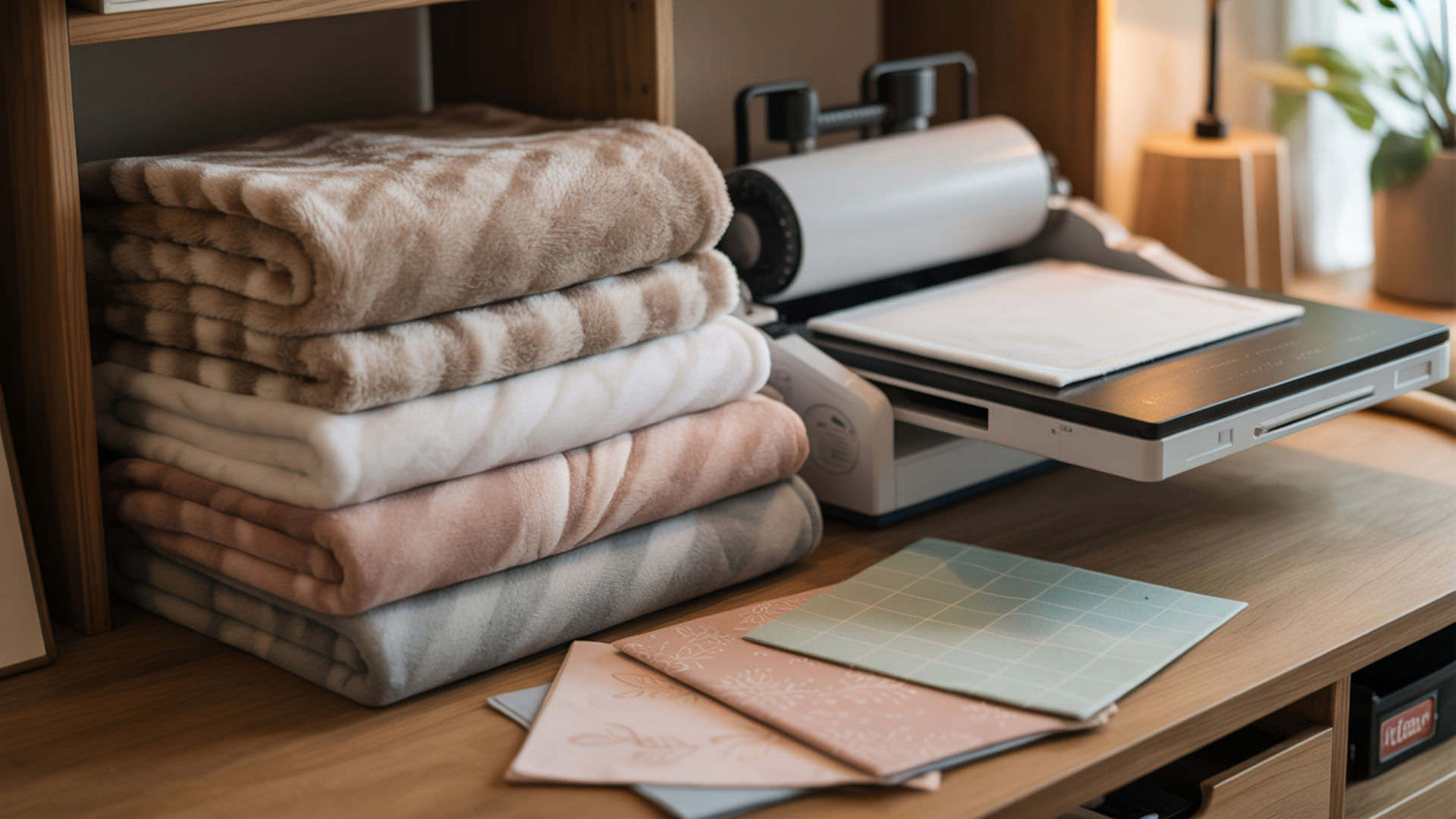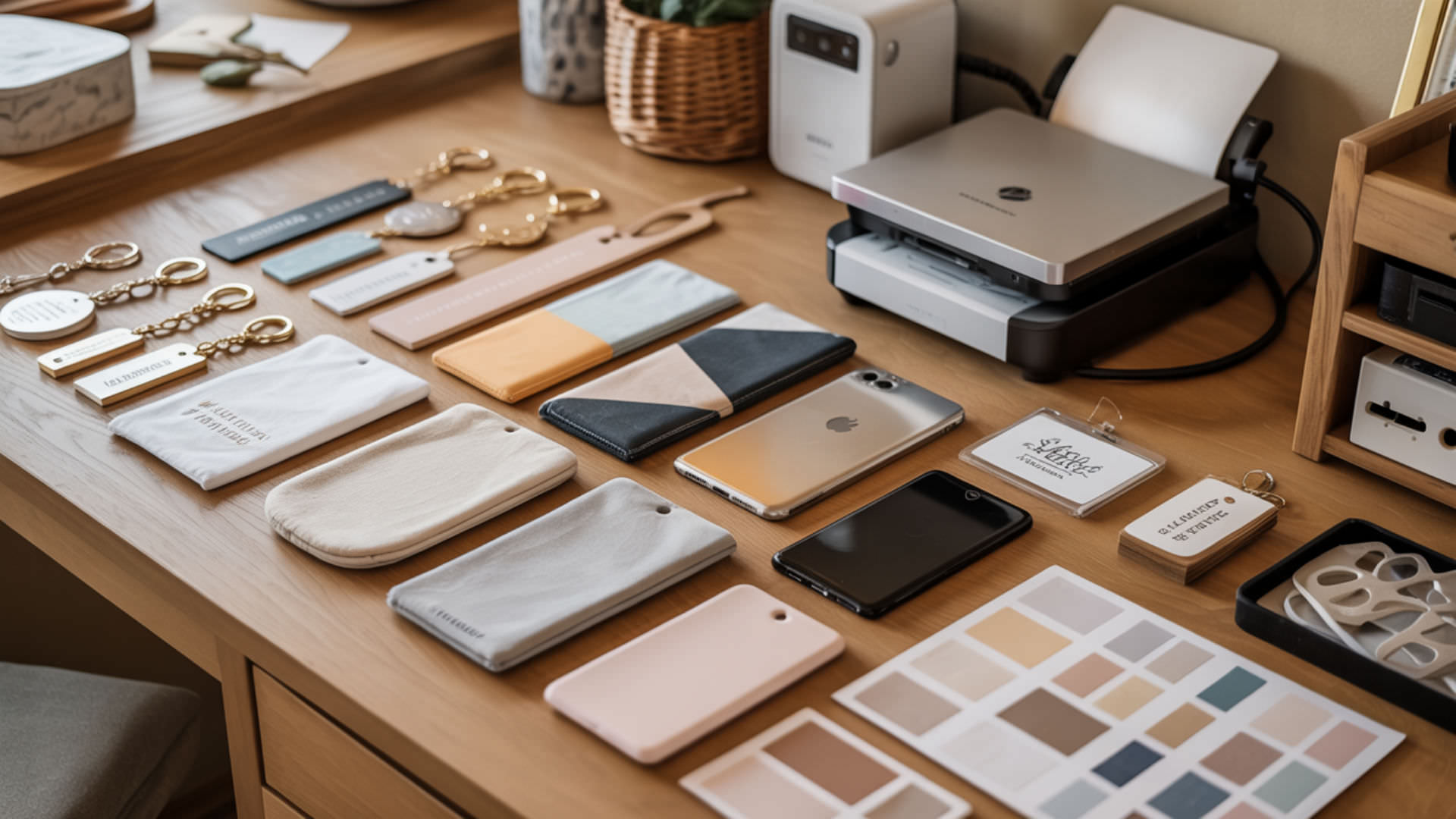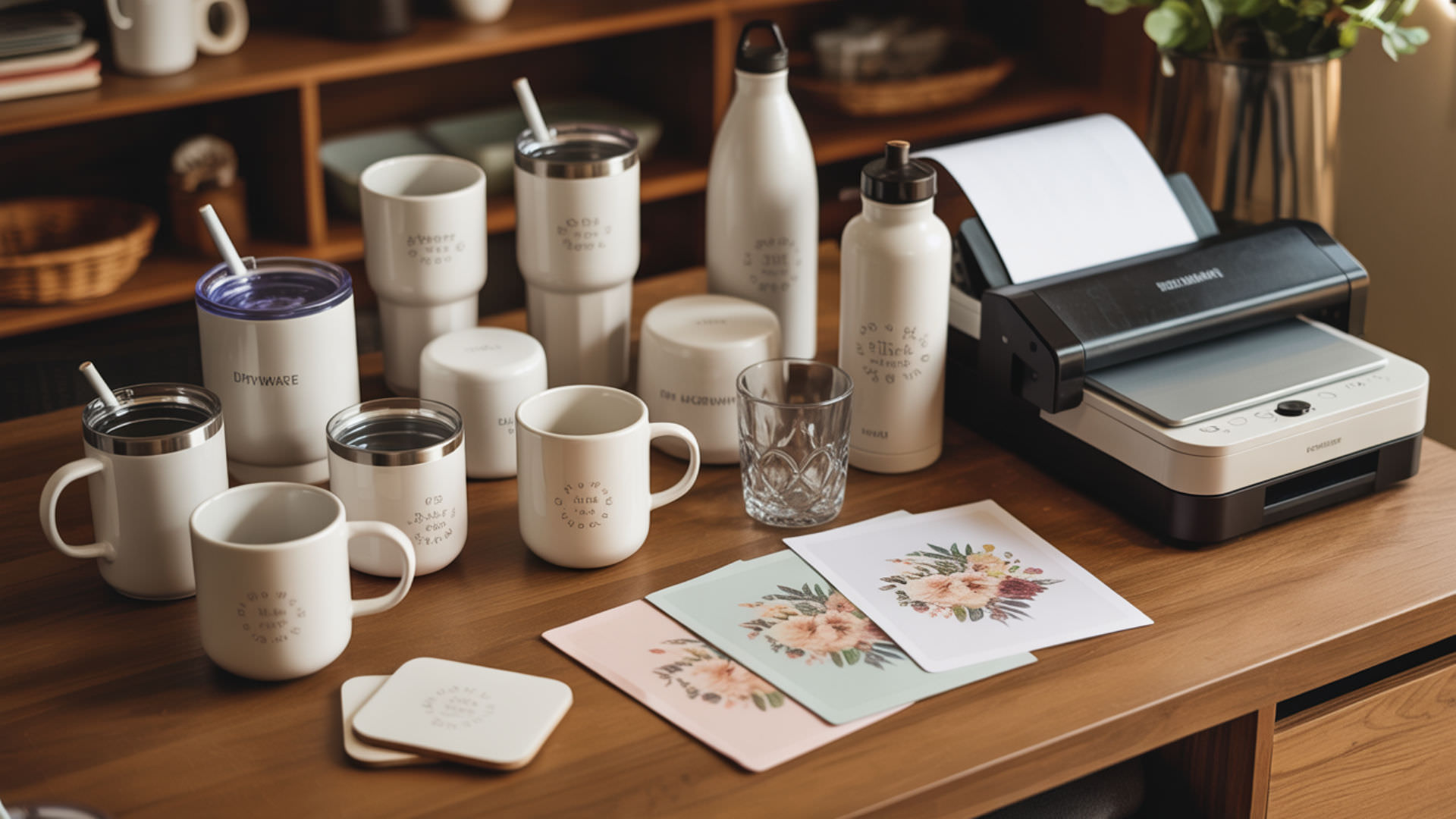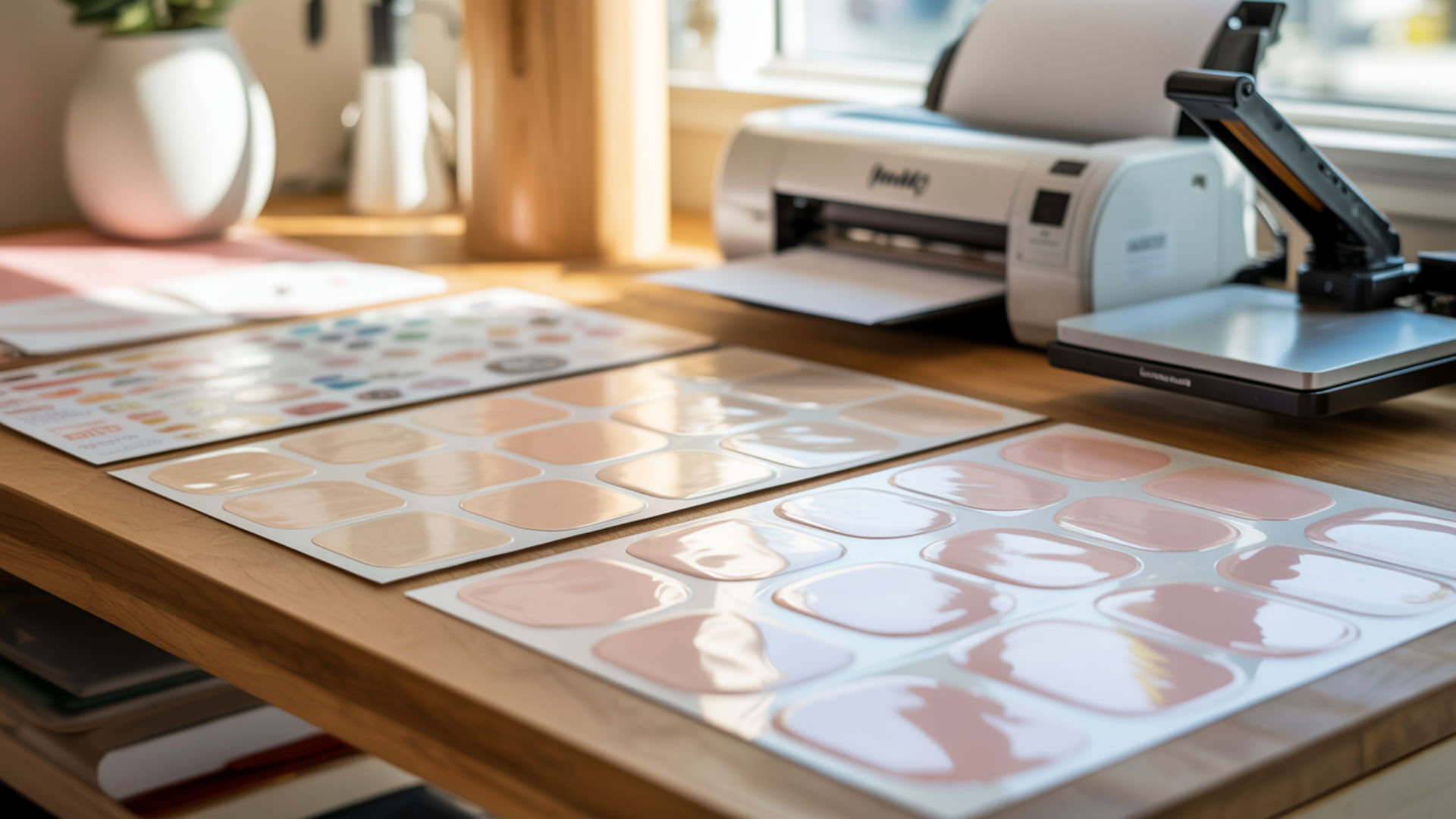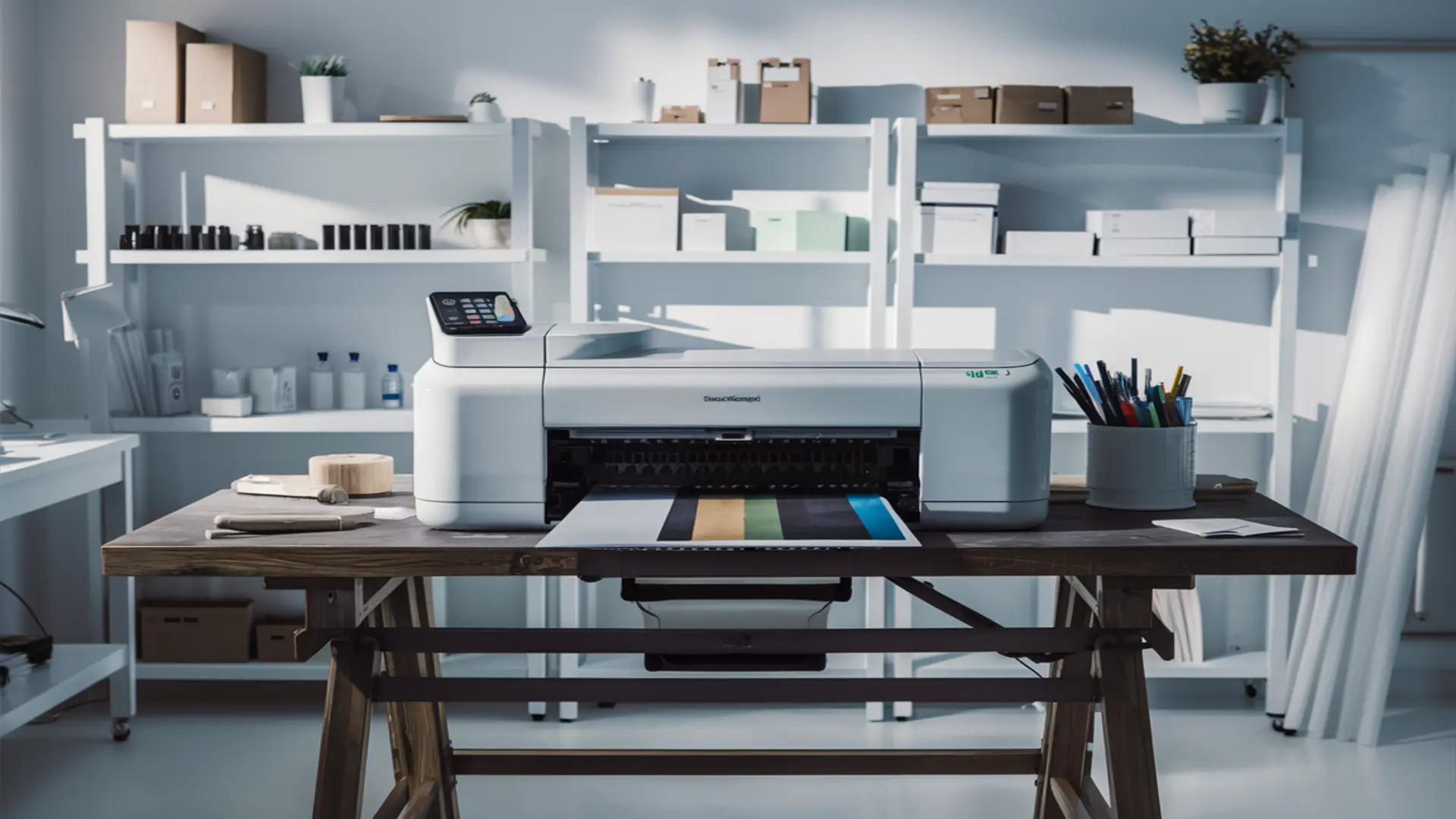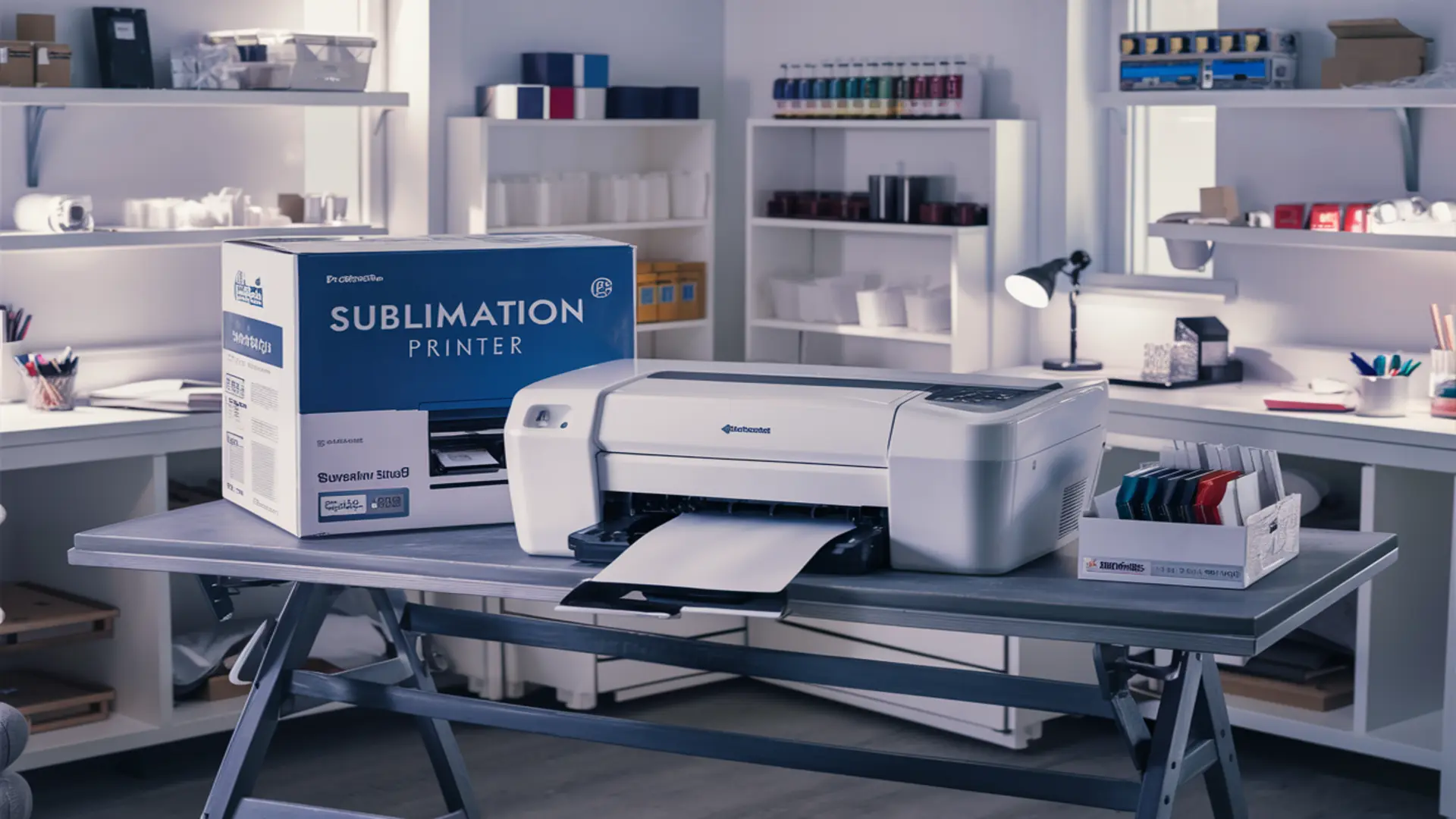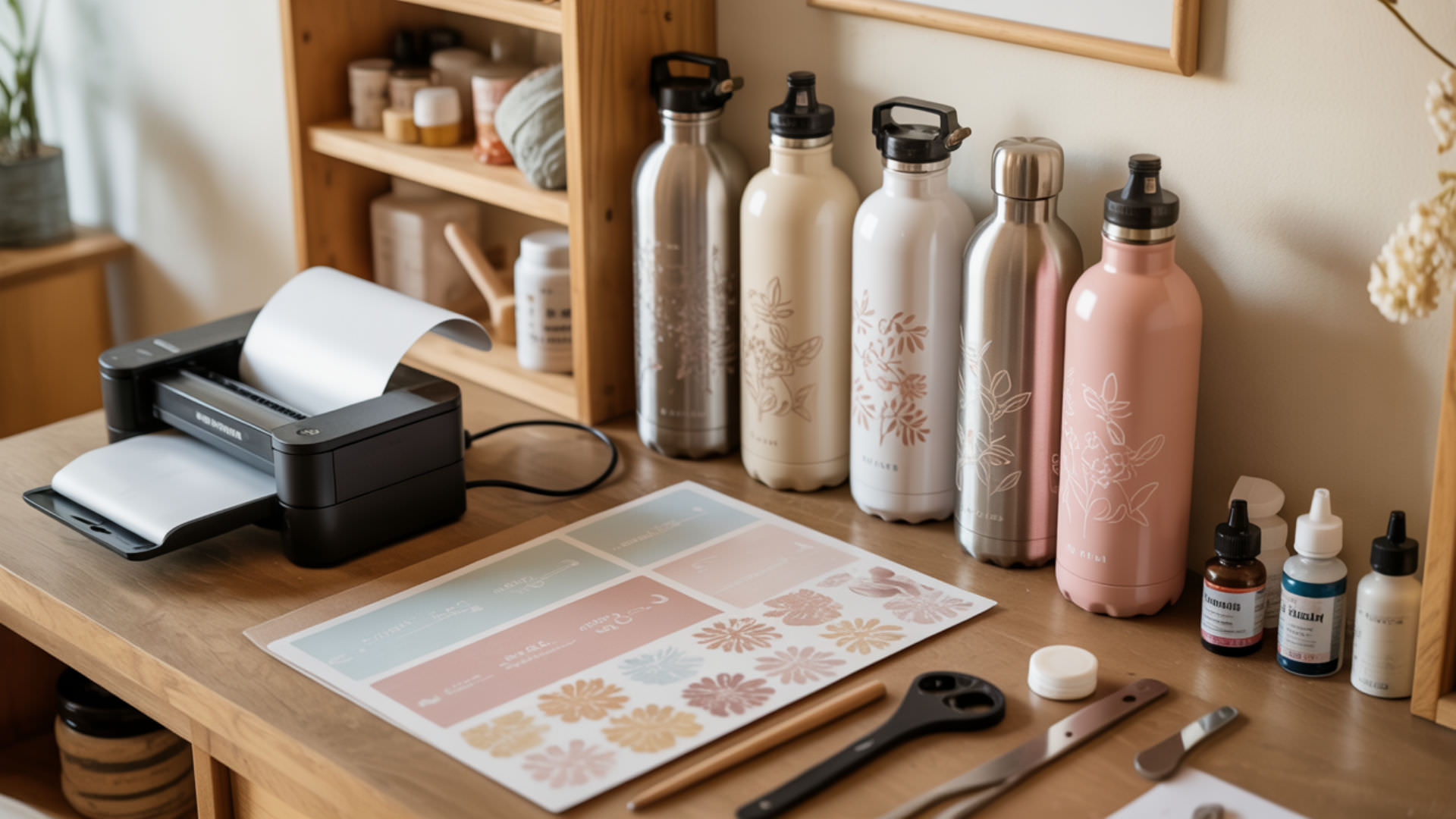Table of Contents
ToggleSublimation blankets transform polyester fabric into personalized gifts, home décor, and promotional products with permanent, vibrant designs. The fabric composition determines transfer success—high-polyester content enables complete dye bonding while natural fibers reject sublimation ink entirely. Fleece and microfiber blankets offer soft textures ideal for photo-quality transfers that withstand washing and daily use. Understanding polyester and fabric compatibility across all home sublimation products appears in our complete polyester home products guide. Polyester fibers contain synthetic polymer chains that allow sublimation dyes to diffuse and become permanently embedded within the fiber structure. [1]
Key Takeaways
- Dye diffusion creates permanent molecular bonds within polyester fibers, producing prints that resist fading, cracking, and peeling through years of regular use.
- Temperature control between 360–400°F activates sublimation dye while protecting soft blanket fibers from scorching or melting during pressing.
- High-polyester content blankets (85–100%) produce the most vibrant results—lower polyester percentages yield progressively faded transfers.
What Time and Temperature Influence Blanket Sublimation Results?
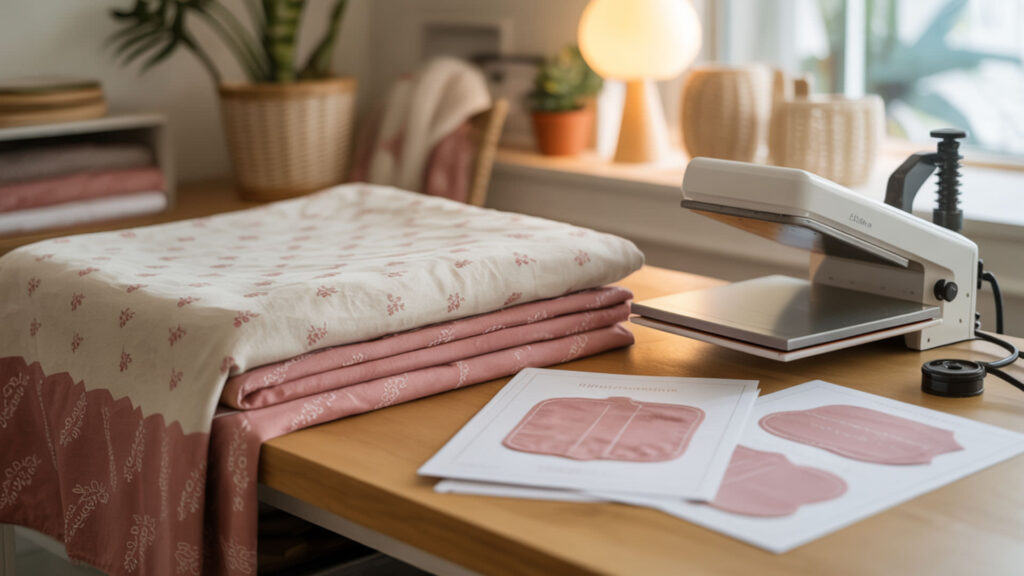
Temperature and heat press timing work together to activate dye diffusion without damaging soft blanket materials during transfer. Thermal conductivity varies significantly between blanket types—thick fleece requires longer pressing than thin microfiber to achieve complete dye penetration. Standard settings range from 360–400°F depending on fabric thickness and polyester content. Consistent temperature across the entire pressing surface ensures uniform color saturation without hot spots that cause scorching.
What Temperature Range Works Safely for Sublimating Blankets?
Temperature settings between 360–400°F work safely for most polyester fiber blankets without risking fabric damage or incomplete transfers. Lower temperatures (360°F) suit delicate fleece materials while higher settings (400°F) work better for dense microfiber construction. Polyester fiber begins degrading above 400°F—exceeding this threshold causes melting, scorching, and permanent texture damage. Test pressing on blanket corners verifies settings before committing to full-coverage transfers on production pieces. Scientific and technical information from the DOE highlights how material properties change with temperature, which helps explain why polyester fibers begin to melt or degrade when overheated during sublimation. [2]
How Long Does It Take to Press a Sublimation Transfer on a Blanket?
Press time ranges from 45–60 seconds for standard blankets, though thick fleece may require up to 75 seconds for complete dye penetration. Thermal conductivity in dense materials slows heat transfer through fabric layers, demanding extended pressing cycles. Insufficient time produces faded, incomplete transfers while excessive pressing risks scorching and fiber damage. Large-format blankets requiring multiple press sections need consistent timing across all panels to maintain uniform color saturation throughout.
Does Sublimation Transfer Better at a Fixed Temperature Range on Blankets?
Maintaining fixed temperature throughout pressing cycles produces more consistent dye diffusion and predictable color results across multiple blanket projects. Temperature fluctuations during pressing cause uneven saturation—some areas receive complete transfer while others remain faded or incomplete. Digital heat press controllers maintain stable temperatures better than analog models, improving consistency in production environments. Establishing proven settings for specific blanket types eliminates guesswork and reduces waste from failed transfers.
What Blanket Materials Accept Sublimation Transfers?

Polyester dominates sublimation blanket production because synthetic fibers accept and retain sublimation dye permanently. Microfiber blankets provide smooth, dense surfaces ideal for detailed photographic transfers with sharp edge definition. Fleece construction creates soft, plush textures that absorb dye deeply into pile structure, though surface texture affects print clarity. Blankets with 85–100% polyester content deliver optimal vibrancy while lower percentages produce progressively washed-out results.
Can Fleece-Style Blankets Accept Sublimation Ink Through Heat?
Fleece blankets accept sublimation transfers when constructed from high-polyester content materials, with pile structure absorbing dye deeply for rich coloration. Fabric finishing affects surface texture—brushed fleece requires careful pressure adjustment to avoid permanently flattening soft fibers during pressing. Pre-pressing fleece for 5–10 seconds removes moisture and reduces fuzz that can interfere with clean transfers. Brushing pressed fleece in the pile direction after cooling restores texture while the transferred design remains permanently bonded.
Can Darker or Colored Blankets Show Faded Sublimation Results?
Sublimation ink lacks white pigment—designs transfer as translucent dye that shows base color through lighter elements, reducing color vibrancy on non-white surfaces. Fabric blends with lower polyester content compound visibility problems since natural fibers reject dye entirely, creating washed-out patches. White or light-colored blankets produce the most accurate, vibrant color reproduction from original designs. Dark blankets cannot receive visible sublimation transfers regardless of technique—the translucent dye simply disappears against dark backgrounds.
Can Uncoated Blanket Fabrics Cause Sublimation Transfer Failure?
Cotton and other natural fibers lack the polymer chains required for permanent sublimation dye bonding—transfers wash out immediately or fail entirely. Without synthetic fiber structure, sublimation dye has nothing to bond with during the gasification and cooling process. Polyester coating sprays can treat cotton surfaces for limited sublimation compatibility, though results never match pure polyester quality. Cotton fiber limitations and polymer coating requirements appear in our complete cotton clothing tags guide. Always verify blanket composition before attempting sublimation transfers.
How Do You Sublimate Blankets Step-by-Step?
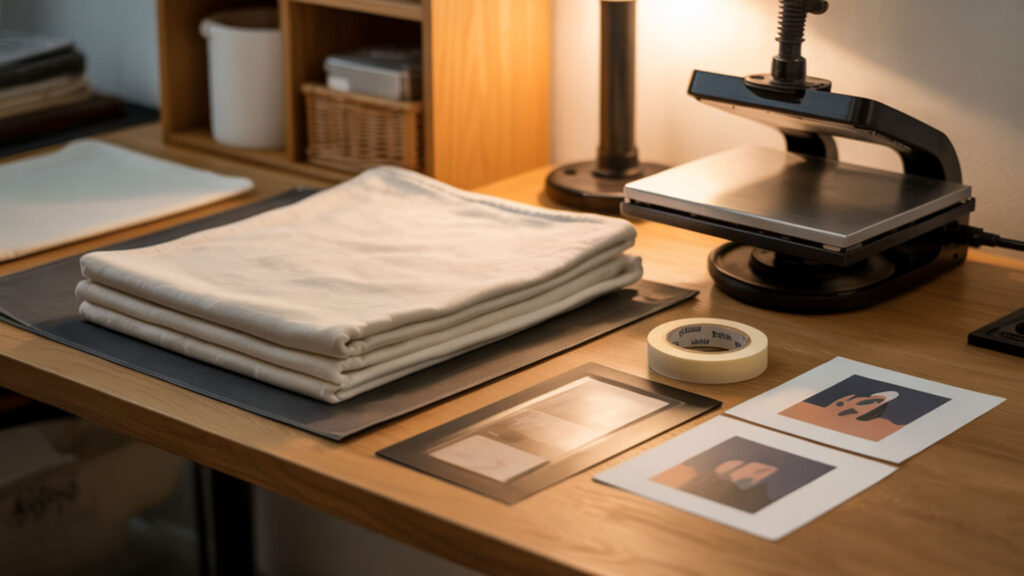
Preheat your heat press to 380–400°F while printing mirrored designs onto sublimation paper at 300+ DPI for sharp detail reproduction. Lint-roll blanket surfaces thoroughly, then pre-press for 5–10 seconds to remove moisture and flatten fibers. Position transfers face-down, secure with heat-resistant tape, and apply medium pressure for 50–60 seconds. Essential printing supplies for blanket workflows appear in our complete printing best sellers guide. Large blankets require sectional pressing with careful alignment to avoid visible seam lines.
Can Sublimated Blankets Be Washed Safely Without Fading?
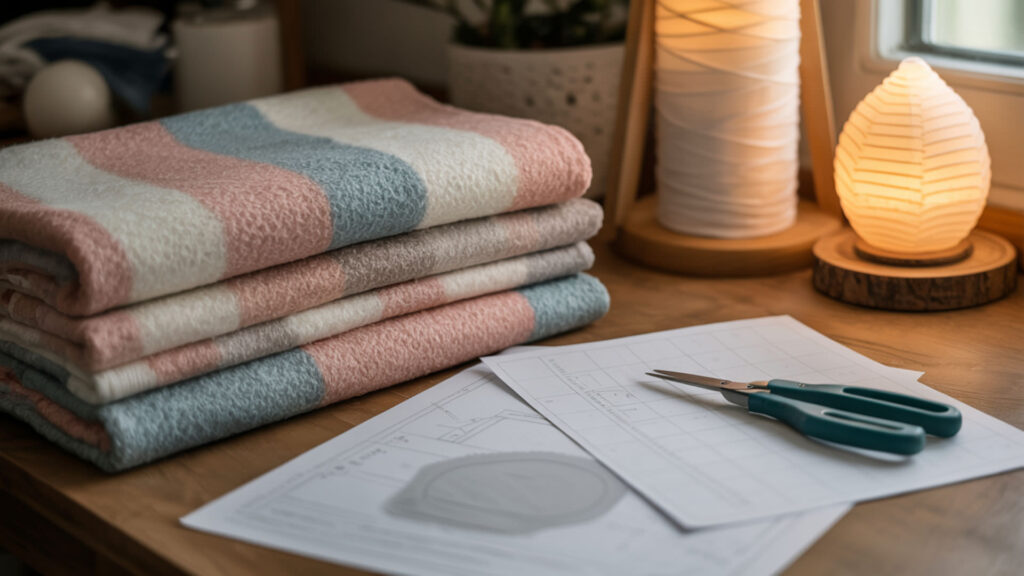
Properly sublimated polyester fiber blankets withstand repeated washing without fading because dye diffusion creates permanent molecular bonds within fiber structure. Moisture-wicking properties in quality polyester help blankets dry quickly after washing while maintaining color integrity. Wash sublimated blankets in cold water with like colors, avoiding bleach and fabric softeners that can degrade fiber surfaces over time. Tumble dry on low heat or hang to dry for maximum longevity of both print quality and fabric softness. Practical insights on polyester fiber handling for sublimation appear in our How To Make Clothing Tags With Sublimation Printer guide.
Does Sublimation Ink Fade Over Time on Washed Blankets?
Properly executed sublimation transfers resist fading through hundreds of wash cycles because dye diffusion bonds ink molecules permanently within polyester fibers. UV resistance protects colors from sunlight degradation, though extended direct sun exposure eventually affects all dyed materials regardless of application method. Indoor-use blankets maintain original vibrancy for years under normal washing and handling conditions. Fading typically indicates either low-polyester content in original blanks or insufficient pressing temperature during initial transfer.
Can Machine-Washing Affect Sublimation Durability on High-Polyester Blankets?
High-polyester blankets maintain sublimation durability through machine washing when proper care instructions are followed consistently. Tensile strength in quality polyester fibers resists the mechanical stress of agitation and spinning without degrading printed surfaces. Cold water washing with gentle detergents preserves both fiber integrity and color vibrancy over extended use cycles. Avoid bleach, fabric softeners, and high-heat drying—these accelerate fiber breakdown and can diminish print quality over time.
What Design Sizing and Heat Exposure Factors Affect Blanket Sublimation?

Large blanket surfaces introduce challenges including elasticity stretch, shrinkage from overheating, and weaving inconsistencies that affect transfer uniformity. Design sizing must account for potential fabric movement during pressing—tight securing prevents shifting that causes ghosting and blurred edges. Full-coverage prints on standard 50×60-inch blankets require sectional pressing with precise panel alignment. Understanding how fabric construction affects transfer results prevents common failures in large-format blanket sublimation projects.
Can Oversized Designs Lose Clarity If Blankets Stretch or Shift During Pressing?
Elasticity in blanket fabrics allows stretching during handling that distorts design placement if not properly secured before pressing. Pressure application must balance firm contact for complete transfer against excessive force that stretches fabric during the pressing cycle. Securing multiple tape points around design perimeters prevents shifting that causes ghosting—doubled images from movement during dye gasification. Allowing blankets to relax flat before positioning transfers ensures designs press without stretch-induced distortion.
Can Excessive Heat Exposure Damage Soft Blanket Fabrics During Sublimation Transfer?
Temperature exceeding 400°F damages polyester fibers through melting, scorching, and permanent texture changes that ruin blanket softness and appearance. Heat setting during manufacturing determines each fabric’s tolerance threshold—some fleece materials require lower temperatures than dense microfiber construction. Extended pressing beyond recommended times causes similar damage even at correct temperatures as cumulative heat exposure degrades fiber structure. Following manufacturer specifications and testing on scrap material prevents heat damage on production blankets.
Ready to Create Custom Sublimation Blankets Like a Pro?
Sublimation blankets offer excellent profit margins—polyester and microfiber blanks cost $8–15 each while personalized finished products sell for $35–75 depending on size and customization complexity. Microfiber provides the smoothest surface for detailed photographic transfers while fleece appeals to customers wanting soft, cozy textures. Master sectional pressing techniques for full-coverage designs, ensuring consistent temperature and timing across all panels. Quality blanks with 100% polyester content deliver the vibrant, durable results that generate repeat customers and referrals.
Frequently Asked Questions
Do blankets show color loss if overheated during sublimation pressing?
Excessive temperature causes color shifting, scorching, and fiber damage that ruins both print quality and blanket texture permanently. Overheated polyester fiber melts or glazes, creating shiny patches where dye cannot bond properly with damaged material structure. Yellowing in white areas indicates heat damage to fabric rather than dye transfer problems. Maintaining temperature between 360–400°F with appropriate timing prevents color loss and preserves soft blanket textures throughout the transfer process.
Can sublimation ink fade faster on frequently washed blankets?
Properly sublimated high-polyester blankets resist fading through frequent washing because dye diffusion creates permanent molecular bonds unaffected by water or detergent exposure. Fading after washing typically indicates insufficient original polyester content, inadequate pressing temperature, or contaminated surfaces during transfer rather than wash-induced degradation. Following cold-water washing and low-heat drying recommendations preserves both color vibrancy and fabric softness. Quality sublimation on compatible blanks maintains original appearance through years of regular laundering.
What visual defects appear if blankets shift during sublimation transfer?
Shifting during pressing creates ghosting—doubled or blurred images where dye transfers to multiple positions as fabric moves under the heat source. Incomplete edge definition appears when portions of designs lift away from contact during the pressing cycle. Color bleeding occurs when gaseous dye migrates beyond intended boundaries due to movement or inadequate pressure contact. Securing transfers with multiple tape points and maintaining firm, even pressure prevents movement-related defects entirely.
Can light sublimation on blankets be reheated later to deepen colors?
Re-pressing sublimated blankets to improve faded transfers produces muddy, degraded results rather than deeper colors—polyester fibers accept dye only once during initial transfer. Heat from second pressing releases previously bonded dye, causing ghosting and color contamination across the entire surface area. Light transfers indicate either insufficient original temperature, inadequate pressing time, or low polyester content in blanket materials. Failed transfers require starting fresh with new blanks rather than attempting correction through additional pressing.
Does storage humidity affect sublimation transfers on blankets before pressing?
Moisture in sublimation paper creates steam during pressing that produces spots, uneven coloring, and adhesion failures on blanket transfers. Store paper below 50% relative humidity in sealed containers and allow blankets to reach room temperature before pressing. Pre-pressing blankets for 5–10 seconds removes absorbed moisture that would otherwise interfere with clean dye transfer. Climate-controlled storage and proper material preparation ensure consistent results across production runs regardless of seasonal humidity variations.
References
- G-C3N4/CeO2 binary composite prepared and its application in automobile exhaust degradation – PMC. (n.d.). PMC Home. https://pmc.ncbi.nlm.nih.gov/articles/PMC7143564/
- Scientific and technical information. (n.d.). Energy.gov. https://www.energy.gov/science/scientific-and-technical-information

